CYMBIFORMIS Tölken, 1985
Section Rosulares
Type : Hardy et. al. 5365, Transvaal, near Rankin's Pass.
Distribution : Known only from the type locality in the Transvaal Waterberg near Rankin's Pass where it grows on shallow soil on rocks.
Description :
Perennial shrublets up to 20 cm high when flowering, moderately branched with stout decumbent branches, leaves more or less clearly four-ranked, old ones wearing off soon.
Leaves obovate-oblong below, oblong to oblong-lanceolate, rarely lanceolate above, (15-) 40 - 80 (-95) x 15 - 25 (-32) mm, acute to acuminate, with broad base almost auriculate, dorsiventrally compressed and distinctly cymbiform, fleshy, glabrous except for fine irregular marginal cilia, green often tinged red.
Inflorescence a terminal flat-topped to irregularly branched thyrse, peduncle glabrous, with relatively large leaf-like bracts gradually decreasing upwards, pedicels 3 - 6 mm long.
Flowers : Calyx : Sepals linear-triangular, ca 1 mm long, obtuse to rounded, rarely acute, glabrous except for occasional marginal teeth, fleshy, green tinged red, corolla tubular, fused basally for about 0.5 mm, white, petals lanceolate to elliptic, 2.5 - 4 mm long, acute to slightly hooded, spreading to recurved later, stamens with brown to black anthers, squamae transversely oblong-cuneate, 0.4 - 0.5 x 0.5 - 0.7 mm, truncate to slightly emarginate, fleshy, white to pale yellow.
Flowering time : Autumn.
Kirstenbosch Botanical Garden :
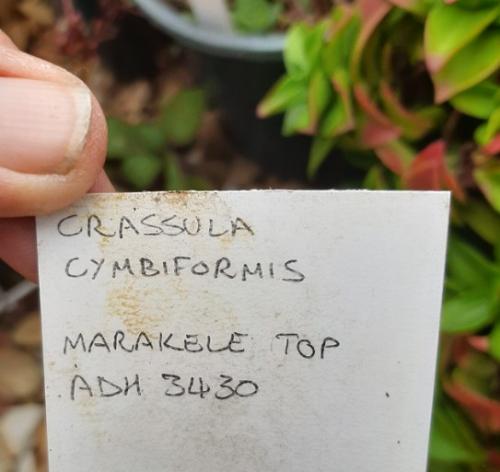
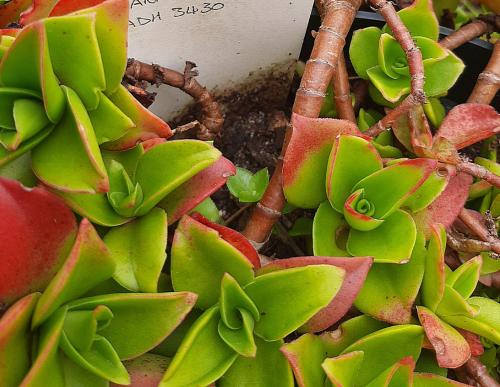
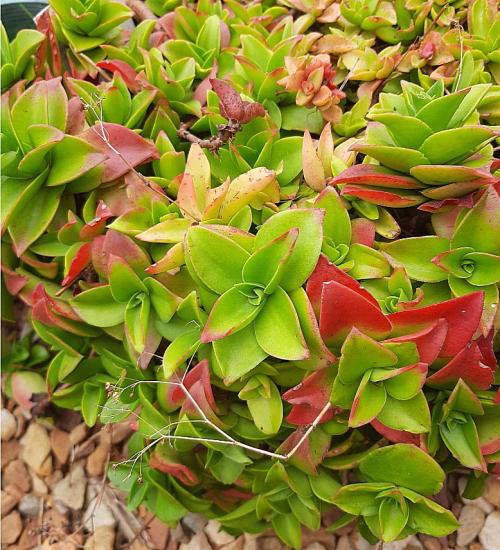
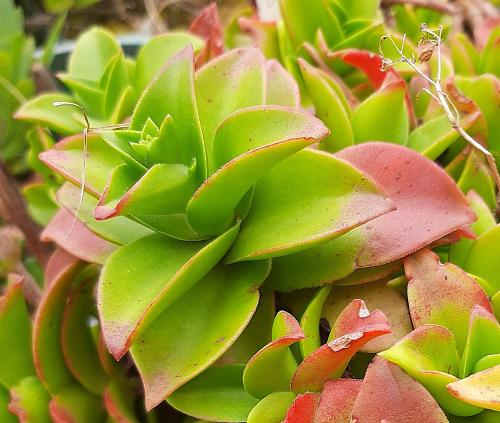
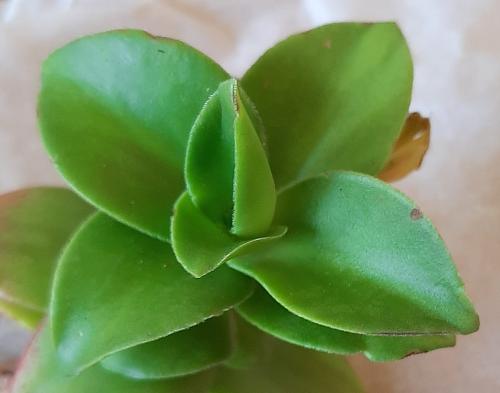
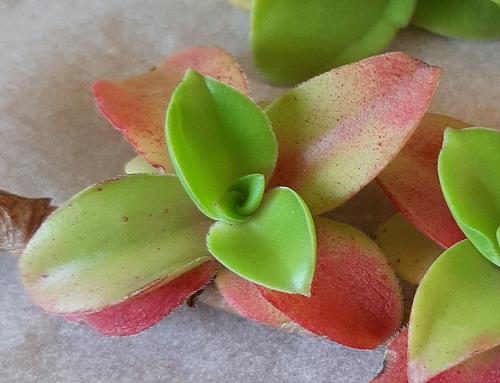
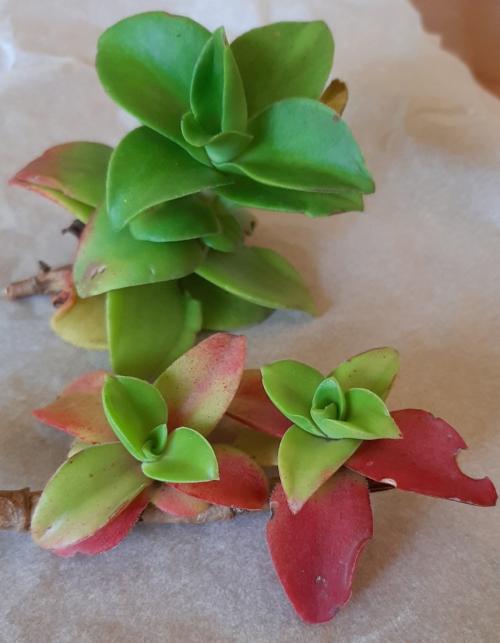
Photos Jacquie Koutsoudis